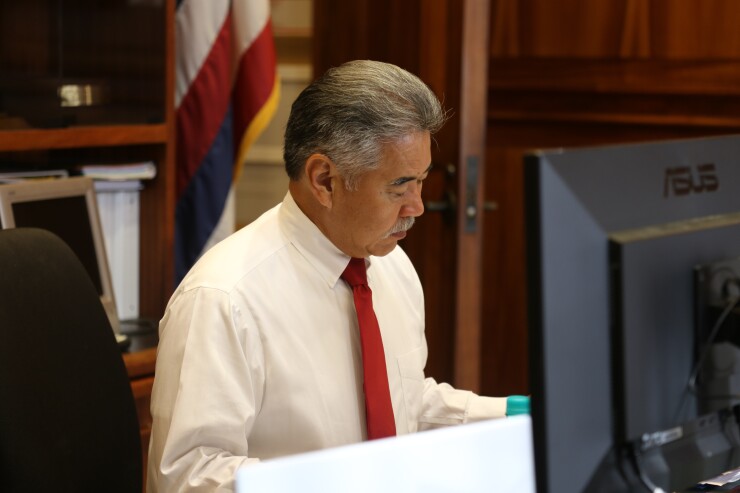The University of Hawaii is moving ahead with plans to construct a new Aloha Stadium and entertainment district using $330 million in bonds even as colleges have been
The team developing a master plan for the university’s new football stadium and entertainment district is holding a public-private partnership industry day Thursday during which it will present information to developers and gather feedback to help create a request for qualifications.

Aloha Stadium, home to the University of Hawaii Rainbow Warriors, and the site of the holiday season Hawaii Bowl, was in need of significant repairs and the stadium parcel was being underutilized, Hawaii Rep. Aaron Ling Johanson, a Honolulu County Democrat, said in legislation he sponsored that authorized state bond sales to support the project.
Hawaii Gov. David Ige signed Act 268 on July 9 establishing a stadium development district, appropriating $21 million from the general fund to develop the district, and authorizing the issuance of up to $180 million in revenue bonds and $150 million in general obligation bonds to build the stadium.
The stadium is budgeted at $350 million and the first phase of development on the 4-million-square-foot project, including the stadium, is expected to exceed $1 billion, said Stacey Jones, owner and principal at Crawford Architects.
The RFQ will be issued in late October, a shortlist of developers chosen by January 2020, and the preferred developer will be selected and financial close slated for July 2020, Jones said. Construction would start fall 2020 with the stadium opening planned for late summer 2023.
Jones’ company, Honolulu-based AHL Architects, and WT Partnership, a global P3 advisor firm, were selected to create the master plan for the property and develop the environmental impact statement.
Crawford has designed three professional football stadiums, for the Minnesota Vikings, Green Bay Packers and the Seattle Seahawks, as well as Camden Yards, home of baseball's Baltimore Orioles.
The proposed 35,000-seat stadium will provide 15,000 fewer seats than the existing stadium, but would also include 4 million square feet of office buildings, housing, entertainment, hotel and public amenities on the 98-acre site.
“The stadium will be right-sized for UH college football games and for its use as an entertainment facility for concerts and family events,” Jones said.
Five other sites were weighed in a public process, before the site of the existing stadium in Halawa was selected for the project.
The stadium fits the model of building fewer individual seats in new stadiums though it remains to be seen whether the loss of individual seats will be replaced with luxury boxes as has been the trend, according to Darin White, executive director of the Center for Sports Analytics at Samford University in Birmingham, Alabama.
Stadium attendance has been declining because of the proliferation of new media channels to consume sport content, White said. For instance, the University of Texas has its own channel that live streams the games. Often, White said, fans are choosing to go to the sporting events and tailgate and not go into the stadium to watch the game.





